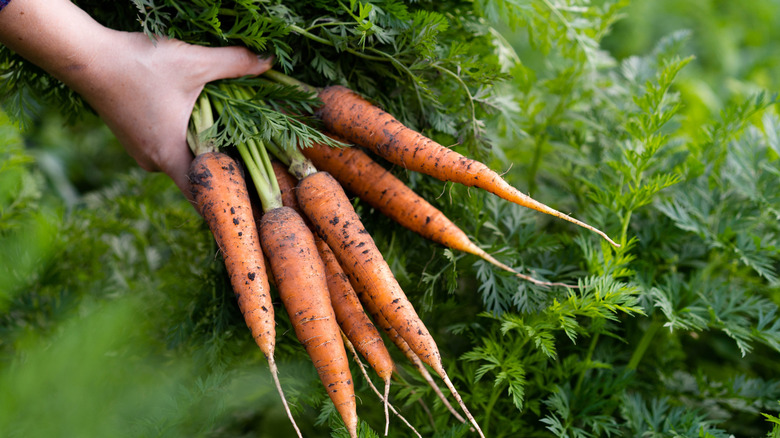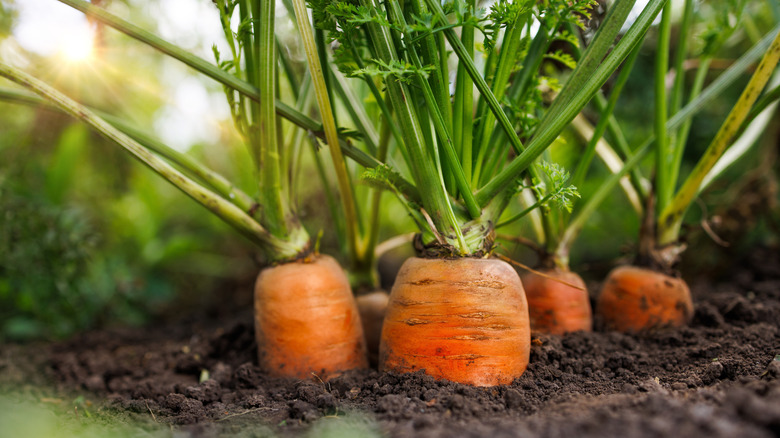The Surefire Way To Tell If Your Carrots Are Ready To Harvest
Many people would agree that there's nothing better than a carrot pulled right from the garden. The flavor is sweet, fresh, and so much better than store bought. But the one thing that can drive a gardener absolutely crazy is pulling a carrot up and finding a tiny, misshapen orange root or finding out your homegrown carrot is so bitter that even a bunny would turn its nose up at it. So, what is the surefire way to avoid harvesting your carrots too soon? Check its shoulders. If you push away the dirt and find the top of the carrot is at least 3⁄4 to 1 inch in diameter, you're most likely good to go.
The visual cue of the size of the shoulders is more reliable than the height of the greens, or even the time frame given on your seed packet. The biggest reasons this might be the case is that there can be extreme variation in growing conditions, the amount of watering, and sunlight exposure. You might have the perfect conditions for your carrot greens to grow lush and tall, but that's not going to matter if your soil is so compact the root gets stunted. This is a common issue that can happen to vegetables that grow underground.
Tips for harvesting carrots
Let's talk about when you should start checking those carrot shoulders. After all, you don't want to go around uncovering your carrots too early. One way you can tell if you should start checking shoulders is by how big the carrot greens are. Check your carrots when the greens are full and feathery and reach a height of 10 to 12 inches. Pair that visual clue with the information about maturity on the back of your seed packet; usually it's 60 to 80 days, depending on the variety. Carrots are among one of the fastest-growing vegetables that you'll absolutely love growing because they are generally ready to harvest in a few short months.
When it's time to harvest, there are a few things you should do to ensure you won't struggle with getting your carrots out of the ground and into your next salad. For starters, it's a good idea to lightly water your garden the day before you harvest. This will help to keep the carrots hydrated when you pull them out. When you go to harvest, loosen the soil around the carrot, grab the greens around the base near the root, and give a gentle tug.
For spring-planted carrots, you will want to harvest before the heat of summer sets in, as this will prevent your carrots from getting too woody. For fall-planted carrots, it's best to harvest after a frost, which makes them taste better. Use a ground cover to protect them while they are growing. After harvesting, remove the greens, and store them in the refrigerator or a cool, dark bin.

